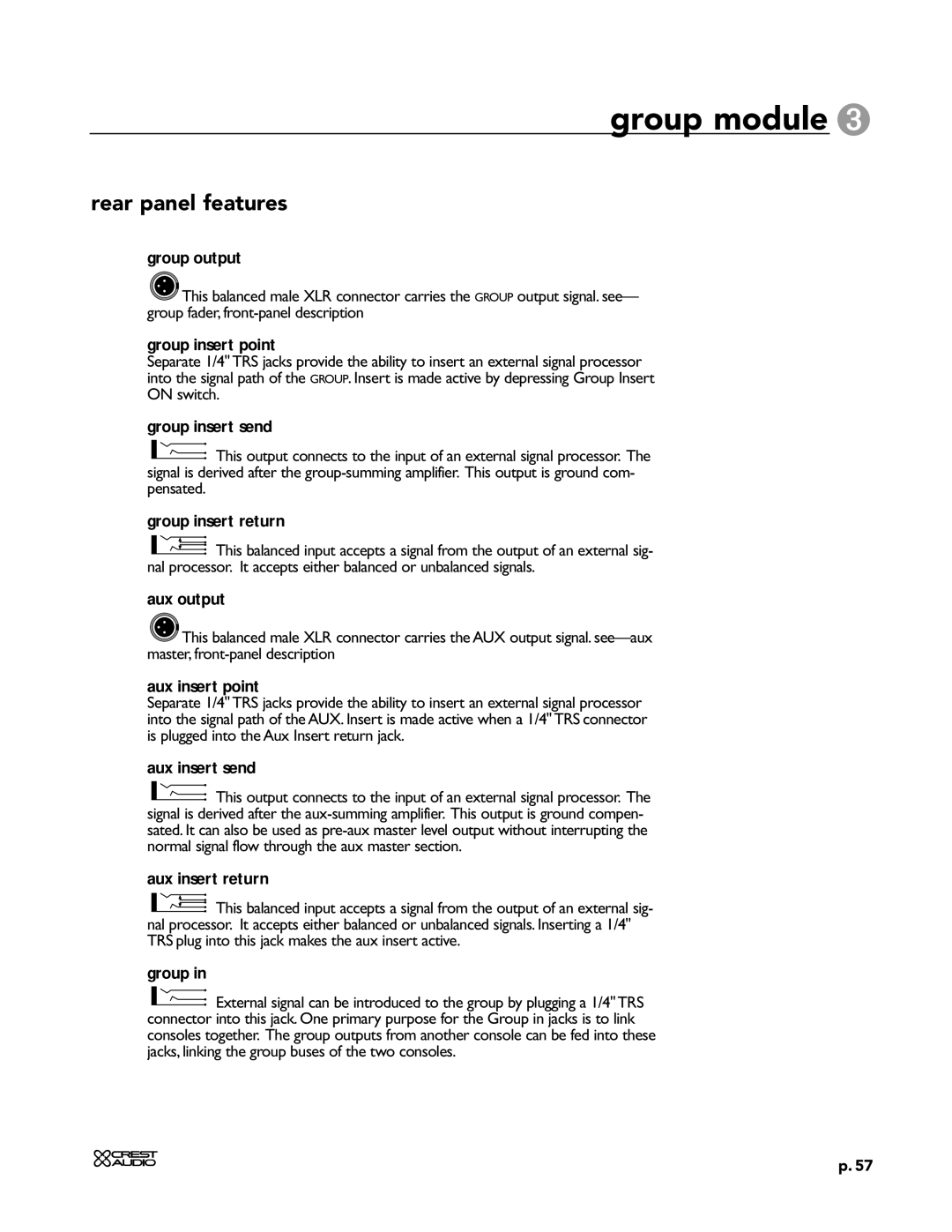
group module 3
rear panel features
group output
![]() This balanced male XLR connector carries the GROUP output signal. see— group fader,
This balanced male XLR connector carries the GROUP output signal. see— group fader,
group insert point
Separate 1/4" TRS jacks provide the ability to insert an external signal processor into the signal path of the GROUP. Insert is made active by depressing Group Insert ON switch.
group insert send
![]()
![]() This output connects to the input of an external signal processor. The signal is derived after the
This output connects to the input of an external signal processor. The signal is derived after the
group insert return
![]()
![]() This balanced input accepts a signal from the output of an external sig- nal processor. It accepts either balanced or unbalanced signals.
This balanced input accepts a signal from the output of an external sig- nal processor. It accepts either balanced or unbalanced signals.
aux output
![]() This balanced male XLR connector carries the AUX output signal.
This balanced male XLR connector carries the AUX output signal.
aux insert point
Separate 1/4" TRS jacks provide the ability to insert an external signal processor into the signal path of the AUX. Insert is made active when a 1/4" TRS connector is plugged into the Aux Insert return jack.
aux insert send
![]()
![]() This output connects to the input of an external signal processor. The signal is derived after the
This output connects to the input of an external signal processor. The signal is derived after the
aux insert return
![]()
![]() This balanced input accepts a signal from the output of an external sig- nal processor. It accepts either balanced or unbalanced signals. Inserting a 1/4" TRS plug into this jack makes the aux insert active.
This balanced input accepts a signal from the output of an external sig- nal processor. It accepts either balanced or unbalanced signals. Inserting a 1/4" TRS plug into this jack makes the aux insert active.
group in
![]()
![]() External signal can be introduced to the group by plugging a 1/4" TRS connector into this jack. One primary purpose for the Group in jacks is to link consoles together. The group outputs from another console can be fed into these jacks, linking the group buses of the two consoles.
External signal can be introduced to the group by plugging a 1/4" TRS connector into this jack. One primary purpose for the Group in jacks is to link consoles together. The group outputs from another console can be fed into these jacks, linking the group buses of the two consoles.
p. 57
